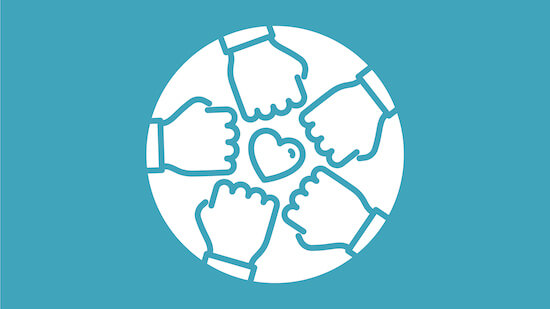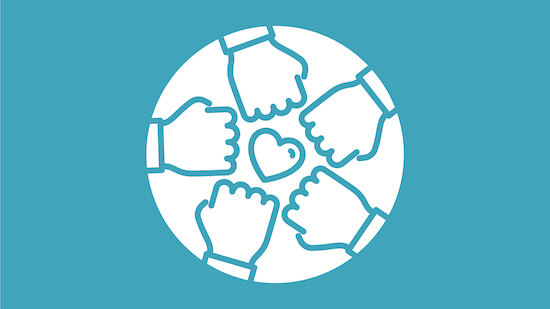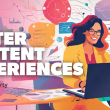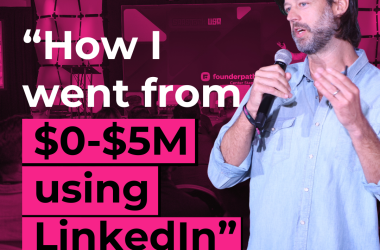You’ll often hear Teresa say that there’s no single right way to do continuous discovery. Something she might not say as often (that’s just as true) is that there’s no single wrong way to do discovery, either.
Because discovery involves changing the way you work on an individual, team, and even company level, it’s all too easy to make mistakes and missteps.
Let’s be clear: The fact that it’s easy to make mistakes is not an excuse for avoiding discovery. It’s just helpful to know what to expect so you don’t have to be too hard on yourself when something goes wrong. And maybe you can save yourself a little trouble by preventing some of the most common and basic errors.
The fact that it’s easy to make mistakes is not an excuse for avoiding discovery. It’s just helpful to know what to expect so you don’t have to be too hard on yourself when something goes wrong. – Tweet This
For today’s Ask the Community, we asked members of the Continuous Discovery Habits community to share a story about where they went wrong when they first started their continuous discovery journey. You’ll hear from: Leann Schneider, Product Manager at Plum.io, Sebastian Wramba, Product Manager at Netfonds AG (finfire), and Jelena Stajic, Vice President of Product at ScholarshipOwl.
If you’ve already begun to develop continuous discovery habits, maybe one of these stories will remind you of something you’ve experienced somewhere in your journey. And if not, we hope they’ll illustrate the importance of getting started and being open to learning along the way.
Ready? Let’s dive in!
Leann’s Story: Communicating the Results of Discovery Is Just as Important as the Discovery Itself
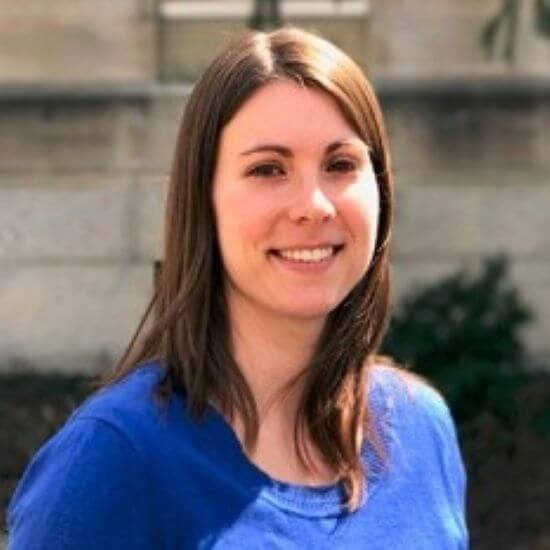
Meet Leann Schneider, Product Manager at Plum.io.
Leann Schneider is a Product Manager at Plum.io, a company that leverages Industrial/Organizational (I/O) psychology principles to accurately assess people’s potential—think an assessment that candidates or employees take to be placed in the right role within a company.
Leann says she “stumbled into product by accident,” but her educational background (a PhD in I/O psychology) allows her to bring scientific subject matter expertise to her role as product manager.
At Plum.io, Leann says, “The Product team’s purpose is to figure out what opportunities we should be pursuing and why, and to work with Design and Development to make that a reality.”
Leann’s Continuous Discovery Journey
One of Leann’s colleagues introduced her to Teresa’s work. After reading the Product Talk blog and Continuous Discovery Habits, Leann was ready to start putting some of the ideas into practice.
Describing the early phase of her discovery journey, Leann says, “Thinking back to where we started, it was in two areas—doing more interviews with our users and focusing on opportunities instead of solutions.”
We started continuous discovery in two areas—doing more interviews with our users and focusing on opportunities instead of solutions. – Tweet This
Setting up and conducting interviews was relatively easy because it didn’t take a lot of resources and they had support from their product leader. They would reach out to users who completed feedback surveys and interview them, offering to plant trees as a token of appreciation for each person who participated. “We’ve gotten great feedback on that. People are genuinely happy to help,” says Leann.
Leann’s Challenge: Finding the Right Way to Communicate Discovery
One of the more challenging aspects of introducing continuous discovery involved focusing on opportunities instead of solutions, especially when it came to stakeholders. Leann says executives would often give the go-ahead to conduct discovery on specific solutions, but she’d take a slightly different approach: “Instead, I approached the interviews broadly without a solution in mind. Then I came back with the recommendations, which often wasn’t the solution that was initially proposed, and have had to explain my work to get people on board.”
Reflecting on this approach, Leann’s learnings have mostly been on communicating the results of discovery. “I have found it challenging to succinctly explain the insights while also showing enough of my work to get people bought in on the recommendations,” says Leann. “It has been challenging to know who to bring in, who to convince, etc. An added complication is that our organization has grown a lot in the last year, so the people I need to get buy-in from have changed.”
Drilling down into one specific example, Leann says she was recently asked to do a round of discovery on a potential solution, but ended up uncovering evidence for a different opportunity that had a lot of promise. “We ran with it and gathered a ton of data on the opportunity and possible solutions, but I didn’t pause to think about how I needed to go back to my leader and the executive team to bring them along,” says Leann. This was especially important in retrospect because the new opportunity would have required a lot of resources to make it a reality.
Leann’s Key Learning: Communication Is Critical
Summing up the experience, Leann says, “I kind of went rogue, thinking that if I gathered enough evidence, it would convince others that it was a good idea. In reality it just ended up being frustrating. I didn’t get the buy-in I needed and was told to stop working on it, not because it was a bad idea, but because the executives didn’t understand the value.”
Luckily, this story ends on a more positive note. The designer Leann was working with took the time to visually outline the broader opportunity and possible benefits in a compelling way. Presenting this information to the leader got him on board with the opportunity. He asked for a tangible summary to share with the executive team, and this helped to achieve their buy-in. “I learned that I need to take a moment to assess new opportunities to see what level of input is required by my boss and executives, and work to bring them along even if the idea isn’t fully built out yet,” explains Leann.
Leann’s big takeaway from this experience? “Communicating the results of discovery, and the potential value of new opportunities, is just as important as the discovery itself. It’s fine to run with smaller opportunities yourself, but bigger ones will require plenty of resources, so it’s important to get buy-in from those who make the strategic decisions in the company.”
Communicating the results of discovery, and the potential value of new opportunities, is just as important as the discovery itself. – Tweet This
Teresa discusses the importance of showing your work and bringing stakeholders along in this keynote from Mind the Product 2017.
Sebastian’s Story: You Can’t Ignore Stakeholders’ Concerns (But You Can Challenge Them!)
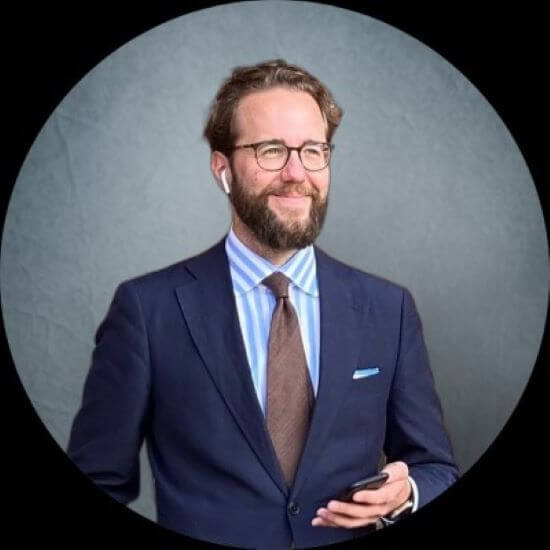
Meet Sebastian Wramba, Product Manager at Netfonds AG.
Sebastian Wramba is a Product Manager at Netfonds AG, a company that supports independent financial advisors, private bankers, and insurance brokers and any combination of those from “lone wolves” to larger companies like private banks or networks. The platform and web application he works on, finfire, connects Netfonds with their customers, their clients, banks, and insurers.
While Sebastian works specifically with the insurance domain, he says they’ve recently integrated internal teams on the same platform so they can be more efficient and reliable in the services their customers expect from them.
Sebastian’s Continuous Discovery Journey
After working in software for a few years, Sebastian realized that product management was the path he wanted to take. “Like most beginners, I started with Marty Cagan’s Inspired and rather quickly stumbled across Teresa’s Product Talk blog,” says Sebastian. It was around this time that Teresa published Continuous Discovery Habits, where all the pieces in the blog finally came together, and it clicked for Sebastian.
To begin his continuous discovery journey, Sebastian wanted to get access to customers. He explains, “This is the best way to learn the most, the fastest.” He also began to shift away from feature-laden roadmaps to a more outcome-oriented perspective, which could be as simple as summing features beneath a common “What problem are we solving here?” headline.
Getting access to customers is the best way to learn the most, the fastest. – Tweet This
Sebastian’s Challenge: Trying to Charge Ahead With Customer Interviews Without Making His Case
Sebastian was keen to get started with customer interviews. There’s nothing wrong with this enthusiasm in and of itself, but because it was coupled with resistance from the rest of his business, it quickly transformed into a sticky situation. Sebastian describes his approach as “banging doors down”—and admits that it wasn’t the right way to move forward in that situation, especially because it was a moment when the company was struggling with their digital offering and customer communication was a polarizing topic. “I wanted to apply the CDH principle of weekly interviewing when the whole relationship to our customers was very sensitive and I didn’t try to explain what the goal or benefit was. I was just saying to stakeholders, ‘I need to talk to customers now!’”
Reflecting on what happened at the time, Sebastian says, “Other departments did not understand what I was going after, and honestly, not even my direct colleagues really understood what story-based interviews were about.”
Another issue Sebastian identified in hindsight was trying to approach all customers with a broad messaging tool (similar to Intercom). Sebastian wanted to use this tool to reach out to potential interviewees, but many of his coworkers were resistant to this idea, expressing concern that it would be hard to identify people who met their specific needs.
Not too surprisingly, Sebastian’s initial efforts to talk to customers were unsuccessful. He sums it up this way: “I didn’t get really far with the result. The company didn’t trust me that I somehow knew what I was doing. It was really hard to get users for an interview this way.”
Sebastian’s Key Learning: Trust Needs to Be Earned, But You Can Still Advocate for Yourself
Over time, Sebastian was able to better advocate for the importance of customer interviews, so he’s happy to report that he’s now able to approach customers himself. “But this trust has to be earned, especially in companies or domains with a more traditional background,” says Sebastian.
What has Sebastian learned from this experience? It’s something he believes Teresa mentions in Continuous Discovery Habits, so he should have listened, he laughs. “Take it slowly, take concerns from stakeholders, sales, management, etc. seriously, and address them in a sensible way,” says Sebastian.
But at the same time, Sebastian emphasizes that stakeholders don’t always know best, so don’t be afraid to advocate for yourself. “Even if you are new to a company, profession, domain, or all three, it’s perfectly fine to identify and challenge assumptions. Stakeholders might have great domain knowledge, but they might not know about building software or successful products,” says Sebastian. Keep in mind that they might have limited knowledge of the user base if they speak to the same customers over and over.
Even if you are new to a company, profession, domain, or all three, it’s perfectly fine to identify and challenge assumptions. – Tweet This
If you’re engaging in continuous discovery, you have the opportunity to speak with many types of customers (and prospects, churned customers, etc.). “Build your intuition by exposing yourself to user feedback through various sources as quickly and as much as possible, map out journeys and experiences, and over time, use this intuition during roadmap planning or discovery.”
Teresa is a big fan of starting small and then iterating. Check out some of her videos on organizational change:
- Introducing your organization to the discovery habits.
- Everyone loses the ideological war.
- Change is iterative.
Jelena’s Story: You Can’t Go From 0 to 100 All at Once
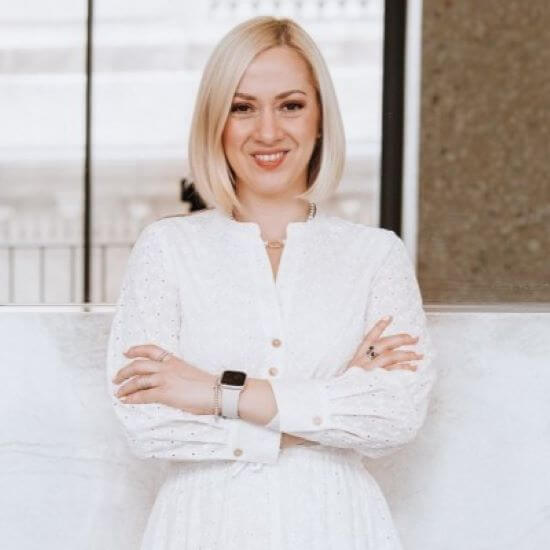
Meet Jelena Stajic, Vice President of Product at ScholarshipOwl.
Jelena Stajic is the Vice President of Product at ScholarshipOwl and she also runs the Product Manager in Pajamas YouTube channel. ScholarshipOwl.com is an AI-based scholarship matching platform that serves 9 million Gen Z students and ScholarshipOwl for Business gives brands a more effective way to run marketing campaigns targeting Gen Z. “Our mission is to eradicate student debt and we’re doing that with scholarship campaigns by connecting Gen Z students and brands,” says Jelena.
Jelena’s product team consists of two product managers who each lead one product and work with their own product trio. “Since we’re such a small team, we’re responsible for driving the core company strategy,” says Jelena. She sees her role as setting the product vision and strategy, but also acting as a mentor and coach who helps her team build autonomy and she tries to remove any impediments they face.
Jelena’s Continuous Discovery Journey
Jelena first learned about continuous discovery when she stumbled across the Product Talk blog in her quest to find a “proper” product development process. “I knew something in the way we used to just push features out was not working and made no sense to me, but I didn’t know how to do it better,” she says.
Once she discovered Product Talk, Jelena quickly learned about Continuous Discovery Habits, which she bought immediately and read twice. Next she joined the CDH community. “I knew this was the way to go, but I needed to get the rest of my team on board, too,” says Jelena.
Jelena’s Challenge: Expecting Everyone to Implement Every Aspect of Continuous Discovery at Once
To get her team on board with continuous discovery, Jelena developed a mini training workshop to teach them the basics and open up a conversation about how this approach might work for them. “Luckily, my team was very, very open and immediately excited and willing to have a go at it,” says Jelena.
However, despite her team’s openness to continuous discovery, Jelena still experienced some challenges and setbacks.
“The biggest mistake was expecting to go from 0 to 100 at once, more precisely, expecting to have every single element of continuous discovery implemented at once,” says Jelena. “With the speed of work we do in our team, it was unreasonable to implement it all at the same time, so the fact that I tried to push it all at once backfired a bit and all of us were super overwhelmed.”
The biggest mistake was expecting to go from 0 to 100 at once, more precisely, expecting to have every single element of continuous discovery implemented at once. – Tweet This
Another misstep Jelena believes she made includes building opportunity solution trees based on internal input rather than customer input. “I’m 100% sure Teresa warned about this mistake, but I guess we needed to learn some things the hard way,” says Jelena. As a result, her first opportunity solution tree was filled with opportunities her team thought were customers’ needs, pain points, and desires rather than what they’d heard directly from customers. “Needless to say, we ended up pursuing opportunities that we thought mattered, but brought no results,” Jelena adds.
Another challenge that Jelena says she’s still facing is getting pushback from certain team members who aren’t very willing to attend customer calls. Jelena’s approach has been to share what the team has learned from customers and hope that these insights will convince those hesitant team members about the power of discovery.
Finally, Jelena says she learned that testing assumptions is not the same as building minimum viable products. It’s been a challenge to break out of the MVP mindset. “Now we know that it’s about learning what can make or break all the assumptions we have and we’ve gotten better at testing that rapidly with our customers instead of jumping to develop an MVP of a feature,” says Jelena. She and her team now run prototype tests and smaller scale simulations inside and outside the product.
Jelena’s Key Learning: Focus on Just a Few Areas at a Time
If she had the opportunity to go through it all again, Jelena says, “I’d start from what I believe to be core to the continuous discovery practice—interviewing and opportunity solution trees—and then I’d work on getting better at testing assumptions, ideating solutions, etc.”
Why is interviewing so important to Jelena? “It’s not just about talking to your customers but how you talk to the customers to really extract their paint points. I learned that it’s not just the customers’ experience around our product that matters, but their life experience and how our product slots into their life to make it better.”
Jelena says she’d pick one to three things to get good at each quarter. “It’s a process. To me it’s about doing a little bit better every day instead of trying to do it all at once.”
Finally, one of the tactics Jelena is interested in exploring further is making sure continuous discovery habits are a priority when hiring anyone new for her team. She says, “I’d argue to hire with continuous discovery in mind, either for people who already have the experience, or people who are willing to learn it. I think it’s important to set clear expectations from day one if this is the way your organization wants to go—and it should.”
I’d argue to hire with continuous discovery in mind, either for people who already have the experience, or people who are willing to learn it. – Tweet This
Teresa spoke about choosing one habit and iterating from there in her 2023 Product at Heart keynote. Give it a watch (or a read) if you need help choosing where to get started.
You never have to face your challenges alone. In the Continuous Discovery Habits community, you’ll be supported by like-minded peers who have experienced similar situations and are happy to help you overcome them. What are you waiting for? Come join us there!
The post Ask the Community: What’s a Mistake You Made Early in Your Continuous Discovery Journey? appeared first on Product Talk.
Ask the Community: What’s a Mistake You Made Early in Your Continuous Discovery Journey? was first posted on January 31, 2024 at 6:00 am.
©2022 “Product Talk“. Use of this feed is for personal non-commercial use only. If you are not reading this article in your feed reader, then the site is guilty of copyright infringement. Please let us know at support@producttalk.org.
